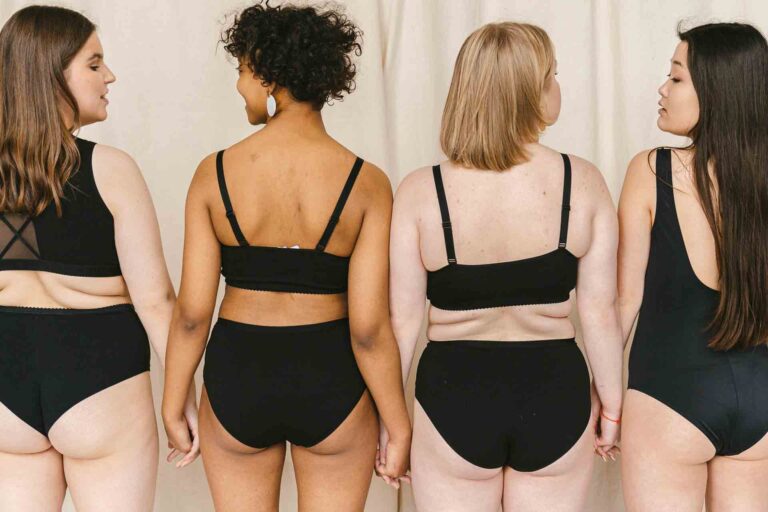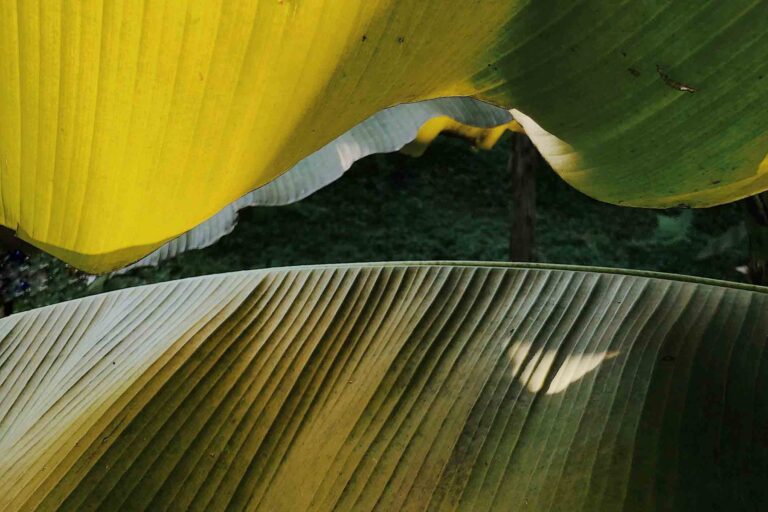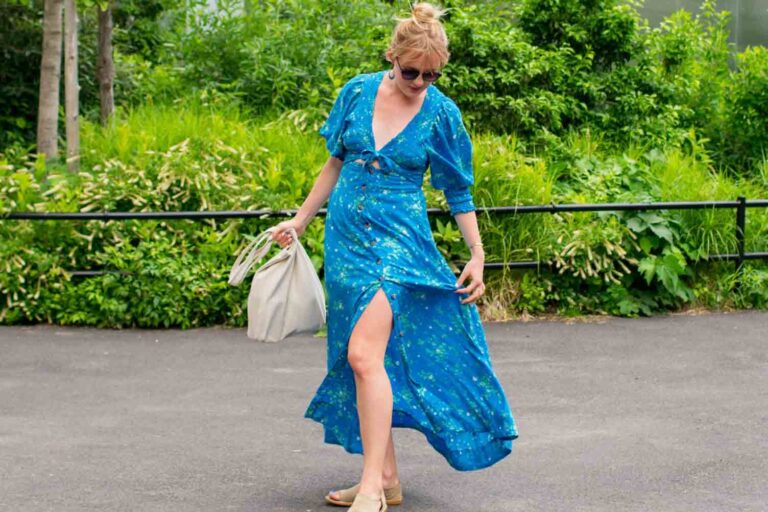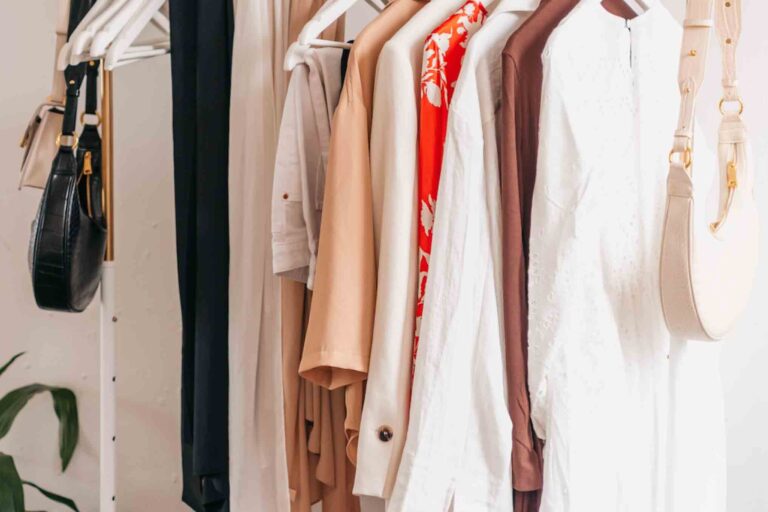In the world of sustainable fashion, it’s no surprise that leather is a contentious topic.
When I started learning about sustainable fashion, I eagerly adopted what I believed were sustainable leather alternatives, wooed by the marketing of “vegan leather.”
However, I questioned my assumption after buying vegan leather boots that quickly showed wear and tear, unlike my durable, older genuine leather boots that I had had for years.
This made me reconsider the impact of leather. Should we avoid leather entirely, or can we find ways to sustainably embrace it?
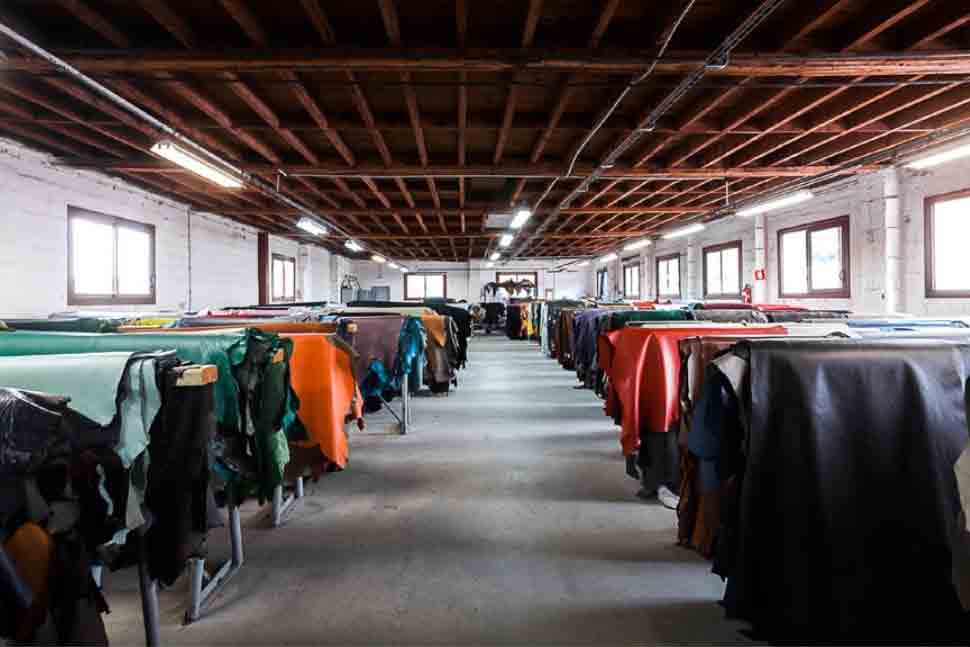
How is Leather Made?
To understand what separates sustainable leather from the rest, it’s crucial to first understand how traditional leather is made.
Processing and Treatment
Leather is sourced from the hides of animals, most commonly cows, sheep, goats, and pigs. The hides undergo several treatments:
- Tanning: The hides are treated with tanning agents like vegetable tannins or chromium salts to stabilize the proteins, preventing decomposition, and giving leather its strength and texture.
- Thinning and Re-tanning: After tanning, the leather is thinned to the required thickness. It may be re-tanned to enhance certain qualities like color, softness, or durability.
- Crafting: The processed leather is then crafted into products, clothing and fashion accessories. This involves:
- Designing and Cutting: Leather is designed and cut into specific patterns based on the fashion item being created.
- Sewing and Assembling: The cut pieces are sewn and assembled into the final product, such as jackets, pants, or accessories.
- Finishing Touches: Finally, the leather item may receive finishing touches like dyeing, polishing, or embossing to enhance its appearance and feel.
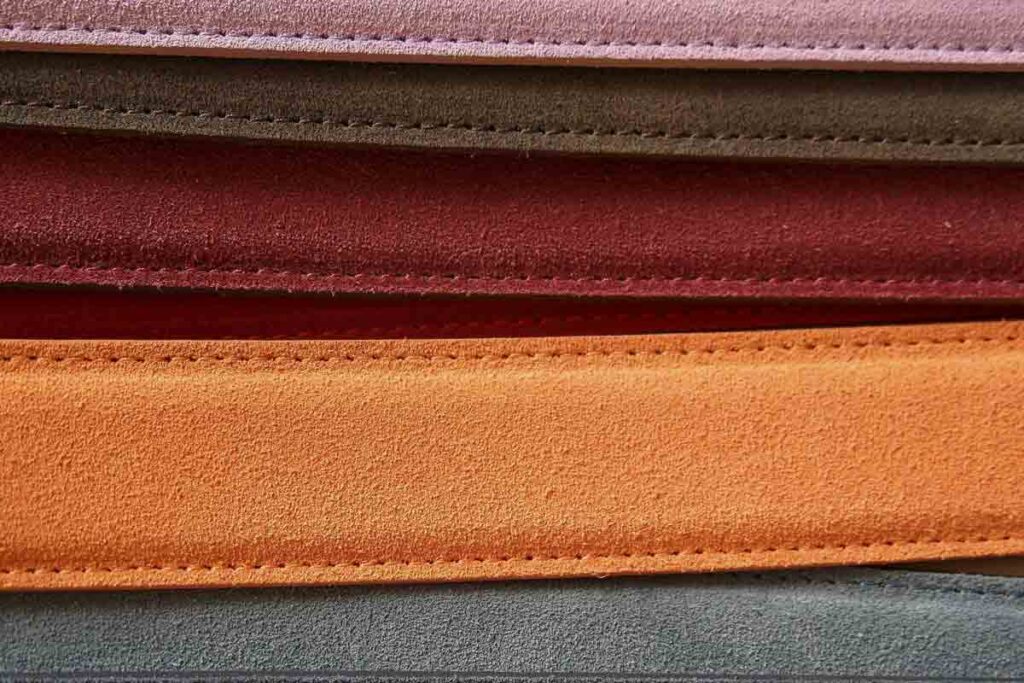
Types of Leather and Their Unique Characteristics
You may encounter various terms that denote different types of leathers. Some of the most frequently seen include:
- Full Grain Leather: The top layer of the hide, treated minimally to preserve natural markings, renowned for durability and moisture resistance. It develops a rich patina over time, ideal for high-quality leather products.
- Top Grain Leather: The second layer of the hide, surface-sanded for uniformity, but less durable than Full Grain. It’s thinner and more pliable, commonly used for various quality goods. ‘Corrected’ Top Grain undergoes additional processing for a more consistent look.
- Nubuck Leather: A Top Grain Leather with a brushed, velvety surface. Stronger and thicker than suede, it’s used in fashion, especially in shoes, for its distinct and slightly rugged texture.
- Suede: Made from the inner layer of the hide, it’s soft and flexible but less durable and stain-prone. Popular for leather jackets and fashion items requiring a soft touch.
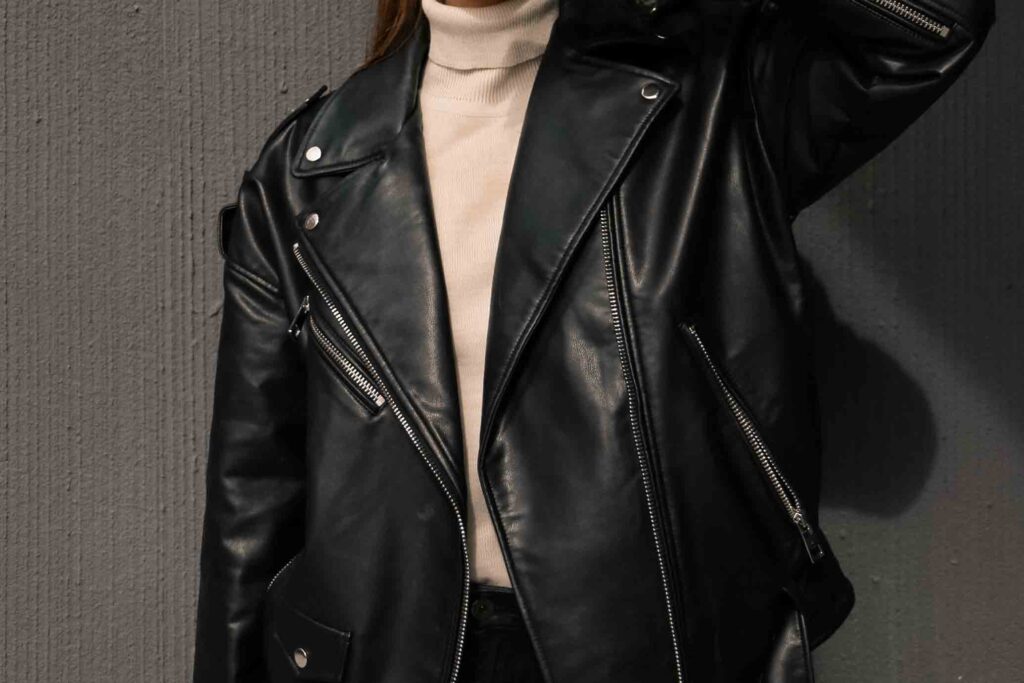
The Benefits of Leather
Despite growing environmental concerns, leather continues to be used. Its enduring appeal is rooted in many benefits that are hard to find in other materials:
- Durability: Leather products are known for their long lifespan, often enduring for decades with proper maintenance.
- Graceful aging: Leather develops a rich patina over time, which enhances its aesthetic appeal, making it more beautiful with age. Unlike many synthetic options that wear out from common nicks and scratches, leather seems to embrace these imperfections, increasing the longevity alongside the character.
- Versatility: Its natural elasticity and ability to mold make leather suitable for a wide range of products, from footwear to furniture to auto interiors.
- Sensory Appeal: Leather’s unique texture and scent add to its luxury and quality, making it highly sought after in high-end markets.
Finding ways to make sustainable leather a reality is crucial to capitalize on the benefits of durability and longevity, two qualities that in theory could make for an eco-friendly materials as it means an expanded lifespan. But first, we have to take a look at what’s keeping it from being sustainable in the first place.
The Environmental Issues of Traditional Leather Production
While the durability of traditional leather is a benefit in terms of sustainability, there are concerns that stop all leather from being an eco-friendly option: deforestation, pollution, and water usage being three of the major issues.
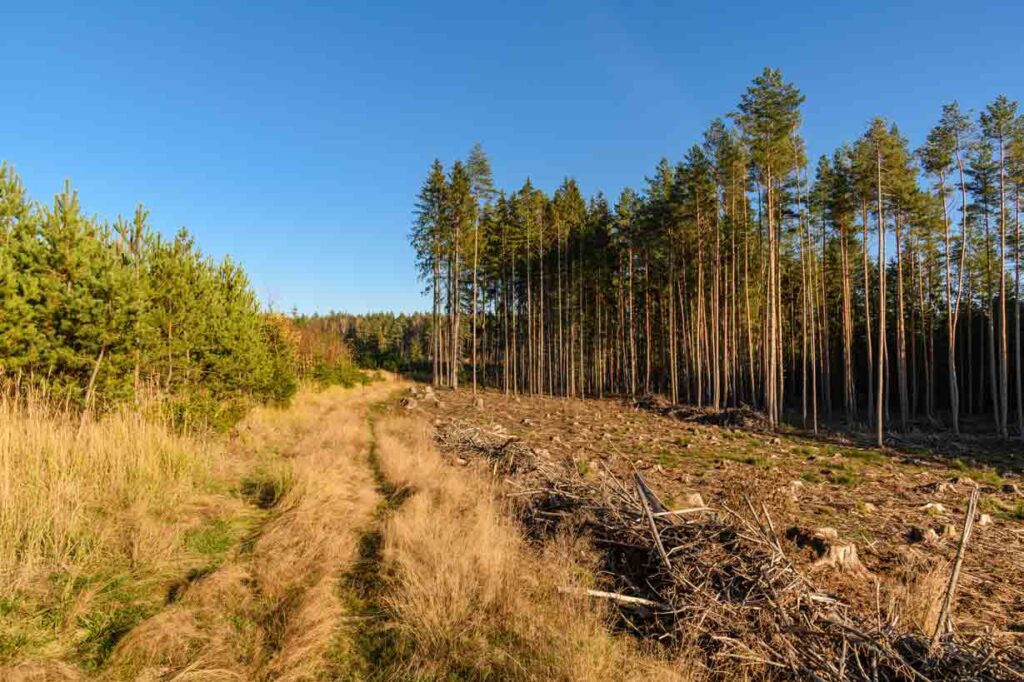
Deforestation & Land Use
Many believe the leather industry to be sustainable because it’s a by-product of the meat industry. In other words, it’s created from the hide of animals that were already being used for meat production.
However, this is an incomplete story. Traditional leather, profitable on its own, is better described as a co-product rather than a mere by-product of the meat industry.
The interconnectedness of the meat and leather industries means that the environmental impact of leather, particularly its carbon footprint, is significant and not just a secondary outcome of meat production, though this can be challenging to calculate.
Raising cattle for meat and leather production uses large areas of land that contribute to deforestation, which is especially detrimental to ecologically important areas like the Amazon rainforest.
Roughly 38% of the world’s habitable land is used for livestock, including the land use required to grow their feed. In addition, around 12% of the Amazon rainforest has been replaced over the last 50 years with cattle pastures.
Not only is the Amazon home to huge biodiversity on this planet, it also absorbs 25% of all C02 produced on earth, making it a crucial area to protect.
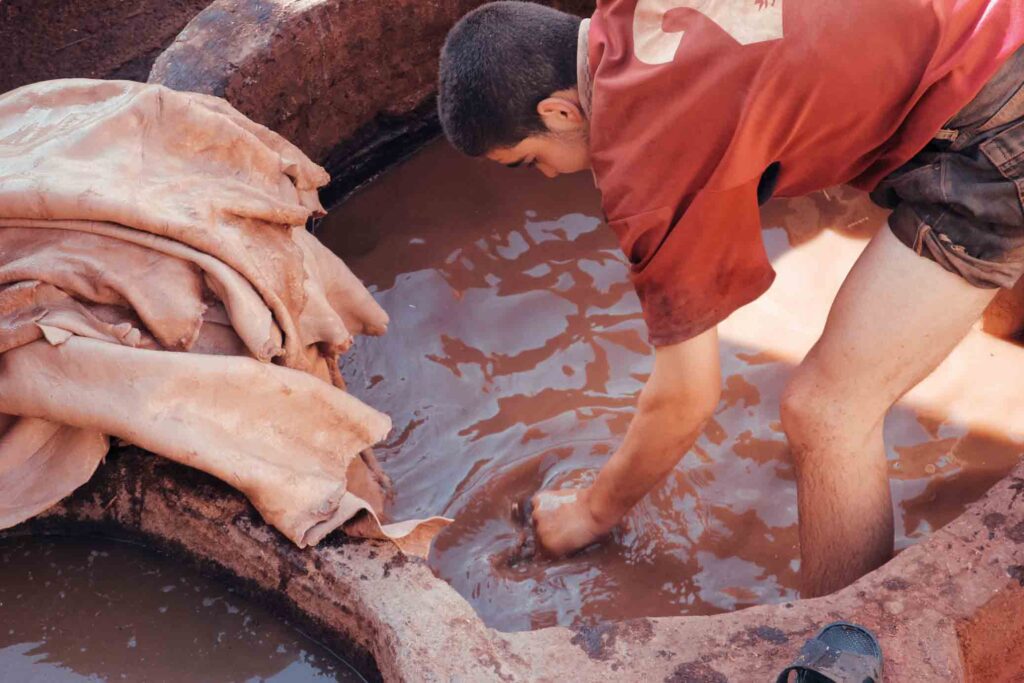
Chemical Pollution
Another concern with leather is the impacts from tanning. Tanning is the process of preparing the skin and hide for leather production.
Traditionally, leather was processed using a chemical called tannin, which was derived from tree bark. This is where the word tanning came from. During the 1800’s, chromium tanning was developed, a method that is still widely used today.
By some estimates, 90 percent of leather is made today through this chrome tanning (roughly 95% of shoes, 99% of clothing and 70% of leather upholstery). This form of tanning results in a softer and more pliable leather than vegetable tanning methods.
Unfortunately, this widely-used method is not without its ecological faults. Chromium used for tanning can cause water and air pollution, contributing to health issues of workers. This process is done using Sodium dichromate, which is carcinogenic and can cause damage to organs like the kidneys, eyes and heart.
Chromium tanning is also a huge issue for the environment. Leftover liquid and solid waste is dumped after tanning processes, and that commonly contains chromium. This pollutes water streams, damages agriculture, and poisons livestock and wildlife.
In India, one of the top producers of leather, cities known for tanning and leather production are plagued with water and health issues. In the city of Kanpur, India’s largest leather producer, tannery pollution has destroyed the Ganges River and has some of the country’s worst water and pollution issues.
Chromium in the water streams can also cause respiratory issues, infertility and birth defects.

High Water Usage
As outlined above, chromium pollutes water streams in areas where tanning is carried out. Unfortunately, this isn’t the only negative impact to water supplies.
Turning an animal hide into leather also requires a large amount of water. Water is used for two main functions: first, it’s needed to dissolve and carry chemicals in the process for dying the hides. Around 60% of water used in making leather is consumed during the tanning process.
Secondly, it’s used to help turn the hides in the drums without them getting damaged from rubbing against the edges.
It takes around 8000 liters, or 2,113 gallons, of water to make a single pair of leather shoes!
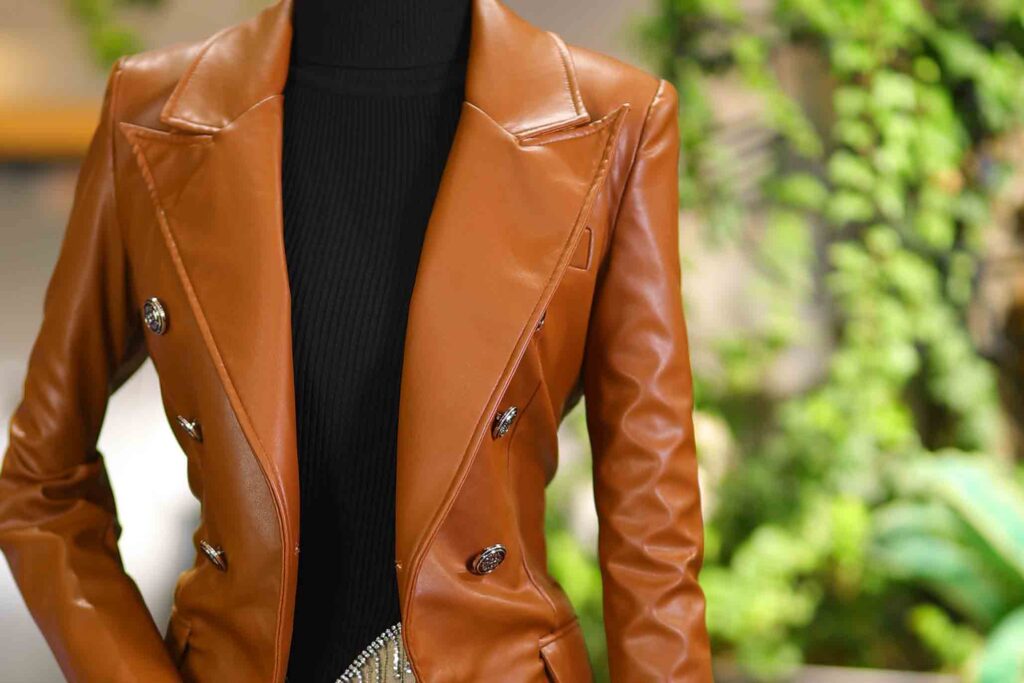
Principles of Sustainable Leather Production
With an understanding of what makes leather unsustainable, including land use, chemical pollution, and water usage, what can we look for to prioritize more sustainable leather options? Below we’ll discuss five principles of sustainable leather, and highlight companies leading the progress in these innovations.
1. Prioritize chrome-free tanned leather
Switching to vegetable tanning or chrome-free tanning processes significantly reduces environmental pollution.
For example, Veja is a brand that uses vegetable-tanned, sustainable leather, avoiding the harmful chemicals typically used in tanning. You can also look for LWG certifications (Leather Working Group), which is given only to tanneries that use the best environmental practices for sustainable leather tanning.

2. Seek transparent supply chains
Brands like Timberlands have committed to sourcing leather only from deforestation-free areas, to ensure their products aren’t contributing to loss of vital ecosystems like the Amazon rainforest.
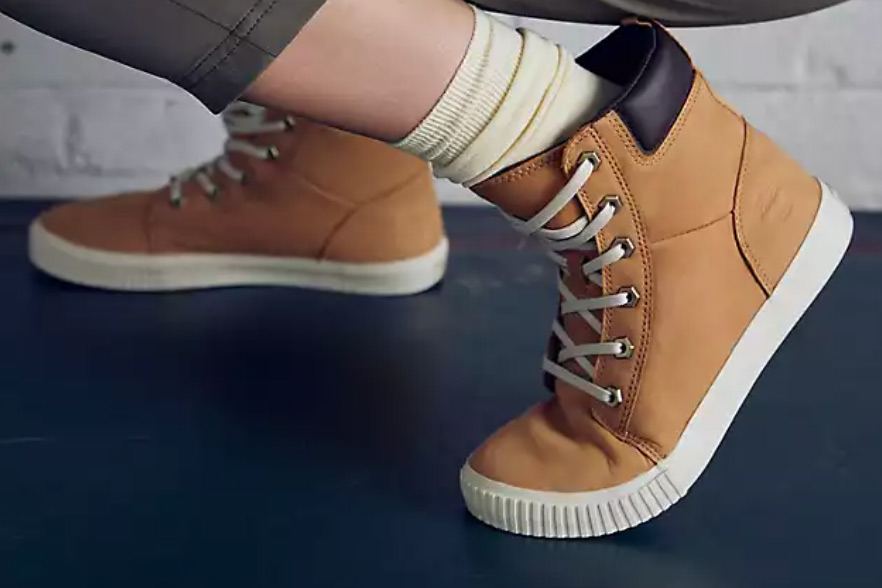
3. Choose reduced water consumption methods
Two ways to improve the water consumption in the leather process are to use recycled water and to simply use less of it in the first place. Though both are easier said than done, there are innovative companies bringing us closer.
For example, ECCO Leather has developed a technology called DriTan which saves large amounts of water during the tanning process by using the moisture already present in the hide, creating a more sustainable leather. They are also an example of a company that recycles water they use to move towards a more circular model.
4. Purchase from sustainable livestock farming
Encouraging and sourcing from livestock farms that practice sustainable farming methods can reduce the carbon footprint and help create a more sustainable leather product. Patagonia sources leather from regenerative organic farms, which focus on practices that restore soil health and reduce greenhouse gas emissions.
5. Utilize waste products
Many large manufacturers create a lot of scrap waste in the process of making their leather products. Elvis & Kresse is an example of a brand that creates more sustainable leather products by using leather offcuts from luxury brands to create durable and stylish bags and accessories.
Wrapping Up
Leather is a contentious topic. It promises longevity and durability, but not without numerous environmental impact drawbacks. Learning what to look for — both what to avoid and what to embrace — is one of many ways we can avoid unsustainable and fast fashion, and help us create a sustainable future we’re excited about.


